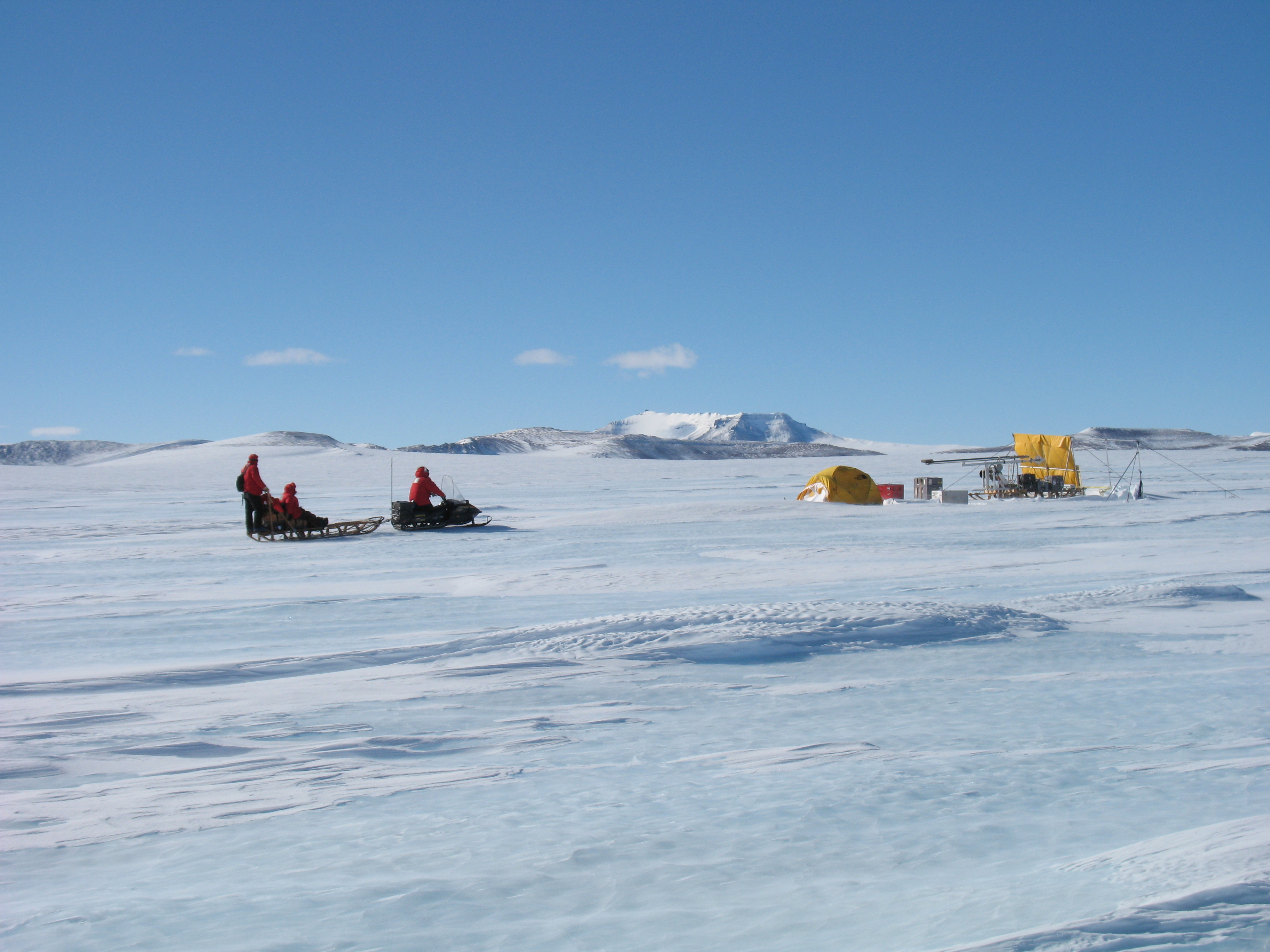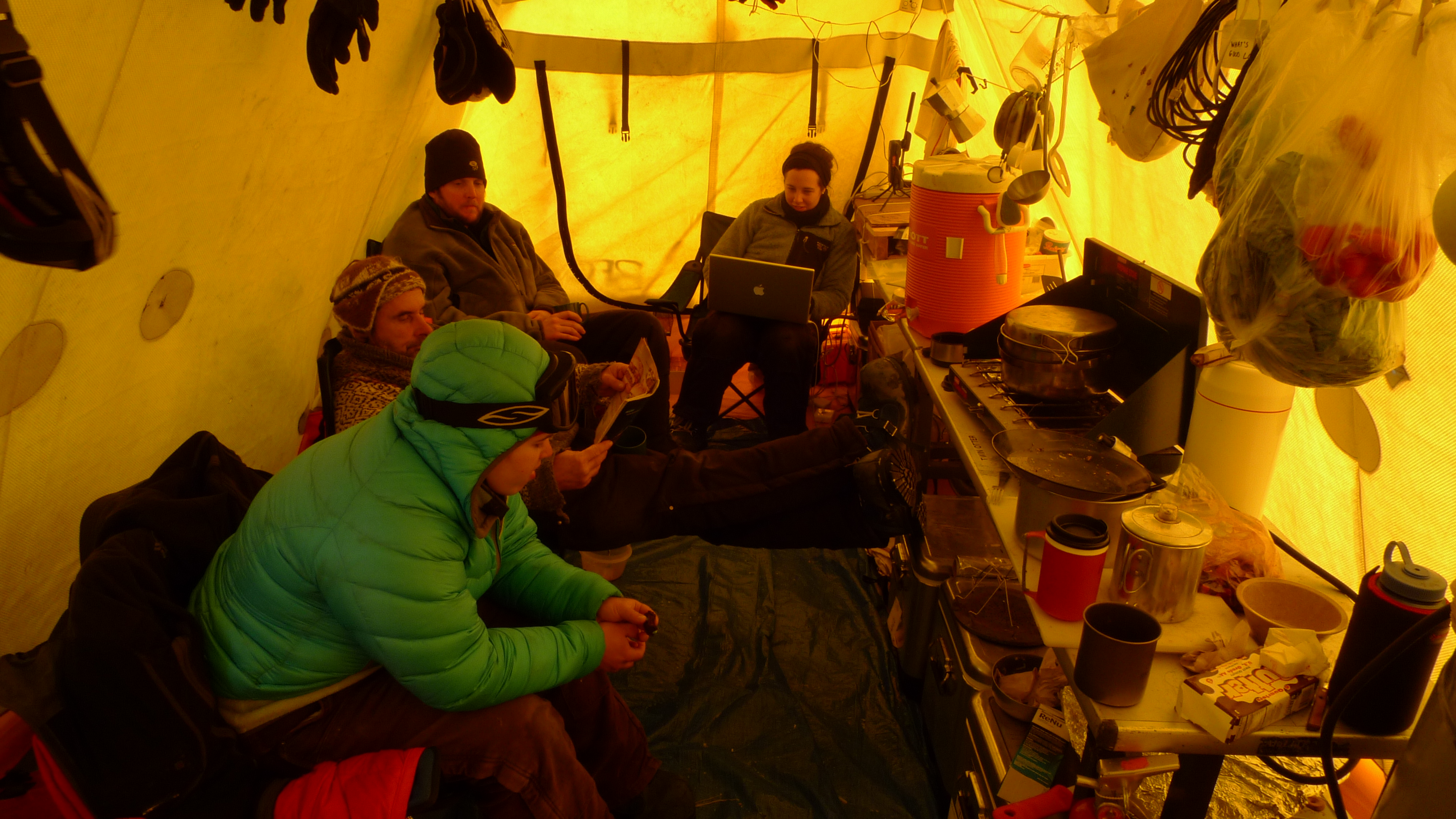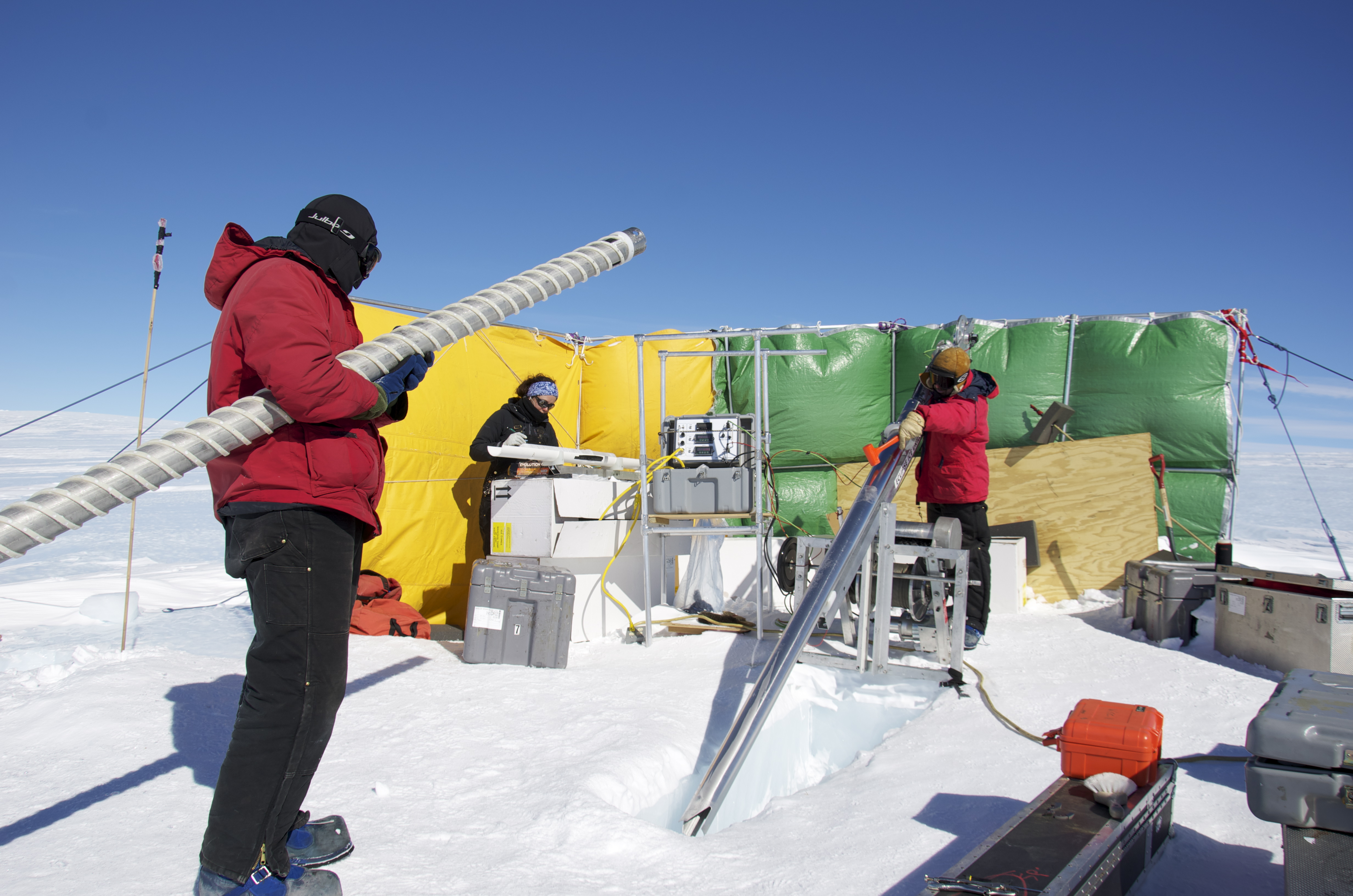
WHEN I WAS ASKED to write about my experience working in the Allan Hills, I could scarcely think of where to begin: the beauty? the wind? In the end I kept coming back to the skills I had gained working there. I believe that the Allan Hills of Antarctica are the ultimate classroom.
They may contain ice as old as 2.5 million years, so they could provide answers to questions about climate conditions for time intervals that even the deepest ice cores in Antarctica have not unveiled to date. More so, those answers are physically sitting right at the surface just waiting to be collected (see Old Ice - Climate record from last 2.5 million years may sit at the surface of Allan Hills). Like most problems that appear simple at first glance, the development of an environmental record from Allan Hills requires a broad set of skills. In my two seasons working in the Allan Hills as a PhD student I learned how to use survey grade GPS and radar equipment, worked as ice-core handler, weather observer, and camp manager among other roles.
When the Twin Otter drops off our team of five, we are greeted only by ice, snow and wind. Before scientific operations can begin we have to erect tents, start melting snow and make first radio contact with McMurdo. Our camp is established on a snowfield that resembles a runway - it is a perfect location for a camp - but our drill sites are as far as 10km away. Our commute, which is approximately 40 minutes on a "good day", involves 2 snowmobiles with attached sleds and a circuitous route around sastrugi, flagged at least every 100 meters for safety. We make this commute daily after observing the weather, chatting with McMurdo forecasters, eating breakfast, and packing lunch.

Our first working days are consumed with the set-up of our drill site. The high winds of the Allan Hills (~30 mph average during our 2010/2011 field season) mean that this operation must be conducted with care - a single errant gust of wind could end our season if the drill becomes damaged! We build a wind barrier from tarps tied to a metal frame with climbing ropes and anchored in place with ice screws. Once drilling commences cores are measured, all visual observations are recorded and they are packed securely for the long journey back to the United States.
Within the lee of the shelter there is relative calm; just an inch outside of it drifting snow dances ferociously across the sloped and rippled blue ice surface. Crampons are a must when trenching, collecting ice samples or wandering around GPS survey sites. All of these activities are necessary in order to develop this record. GPS surveys show how the ice is flowing through the area. Near surface sampling will show how the environmental signal varies along that flow path and trenched samples will bring us closer to answers for those nagging climate questions.
During lunch all five of us pile into a tiny mountain tent that we keep at the drill site for emergencies to pass around thermoses of hot water and bags of snacks. At the end of a day the cores are loaded onto sleds, tied in place and slowly driven back to camp. This is a nerve-racking haul; these cores are so important. Dating the gas they contain is our primary mechanism for establishing the chronostratigraphy of ice flowing through the Allan Hills and I don't want to be the one that rolls the sled!

Once back at camp while some members lower the ice cores into a snow-pit where they will await transport back to McMurdo, others get to work in the kitchen. With the smell of dinner wafting through the tent, each day's data are transferred to back-up notebooks, USB drives and computers. Progress is discussed and plans are made. As we thaw out, we sink lower into our chairs satisfied with a hard day's work.
In a field camp of five, in a place like Allan Hills, there is no division between science and logistics - both types of work are interwoven and it's not possible to define where one begins and the other ends. For me, it is the perfect place to learn the lessons I will apply throughout what I plan to be a lifetime of scientific fieldwork.
For more information about the Allan Hills project, visit:
http://cci.um.maine.edu/2MBIA/
